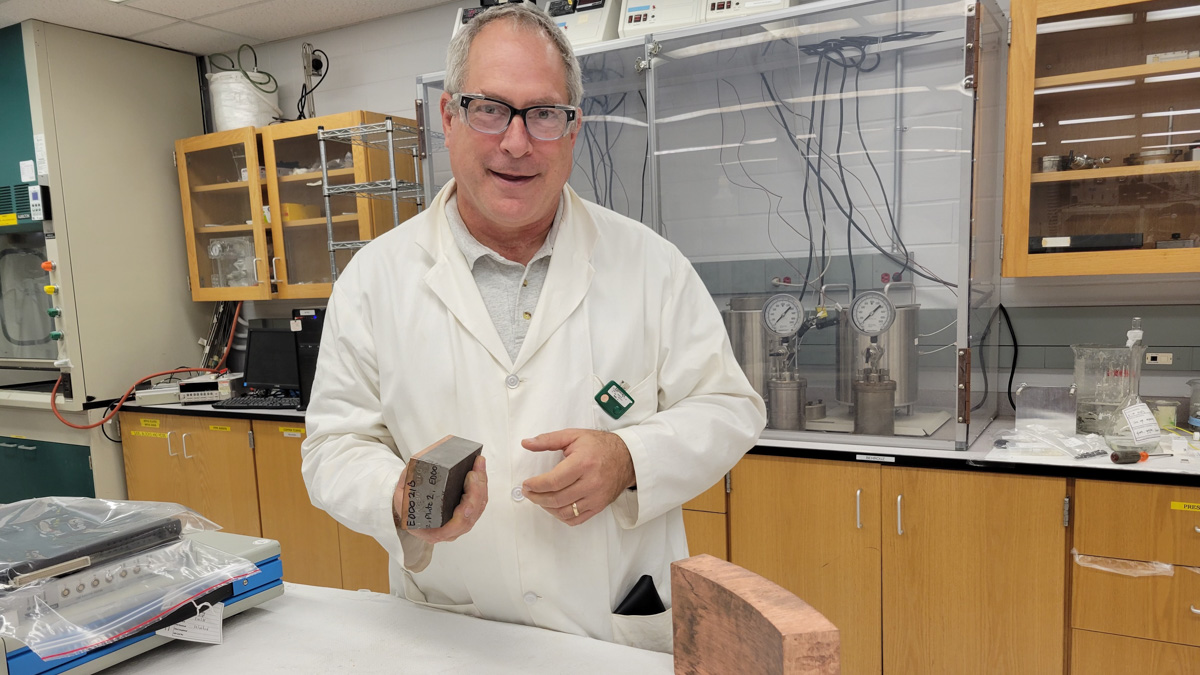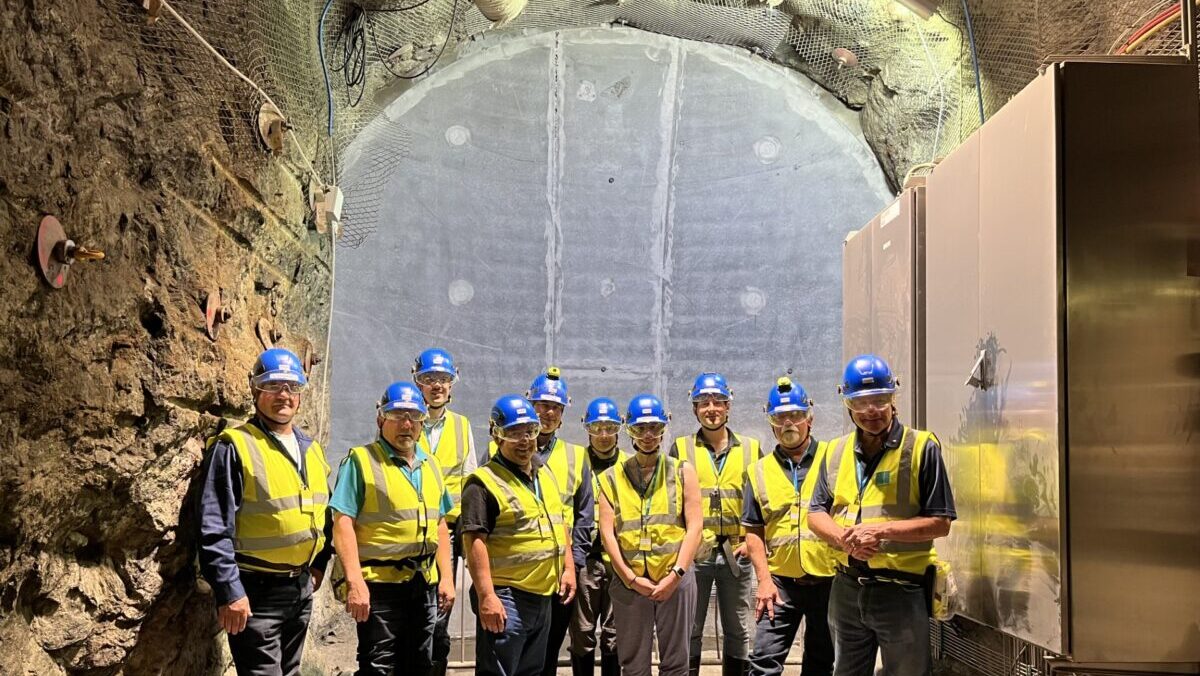Justin McKague travelled across the Atlantic for the first time in July to see the graveyard Finland has built for its nuclear waste.
It was a meaningful trip for the resident of South Bruce, a municipality of 6,000, because, by next year, his town will vote to decide if they want a similar graveyard in their town.
Canada is inching closer to building a permanent repository to host 3.2 million used nuclear fuel bundles — enough to cover nine NHL hockey rinks from the surface to the top of the boards.
But the problem is finding a town willing to host the $26-billion project for the next million years.
There are two contenders, both Ontario towns: South Bruce, about 150 km from Lake Huron, and Ignace, roughly 400 km from Lake Superior with a population of 1,200.
Each town will hold a public vote next year before a final decision is reached.
So, the pressure is on for the Nuclear Waste Management Organization –– responsible for implementing the long-term nuclear waste plan –– and critics of the program, We the Nuclear Free North.
An international problem
The first Canadian nuclear reactor came online in 1945, but work towards a permanent home for radioactive waste did not pick up speed until five decades later.
And it took until 2002 for Ontario Power Generation, New Brunswick Power Corporation and Hydro-Québec to found the Nuclear Waste Management Organization to develop and implement a long-term plan for Canadian nuclear waste.
Storing nuclear waste — with all the associated health risks — is difficult and there are no viable ways to repurpose it.
There is also the problem of life span: it can take hundreds of thousands, if not millions of years for high-level radioactive waste to decay, making it difficult for countries to find a permanent solution for nuclear waste.
At present, the consensus of experts is a deep geological repository. Many countries are building storage rooms hundreds of metres below the ground. Finland is set to be the first country with an operational deep geological repository in 2024.
Other countries including Canada are making headway. Canada’s storage facility will be deeper than 500 metres or about as deep as CN Tower is tall, according to the Nuclear Waste Management Organization. It is projected to be operational by 2040.

It is a long-term project, says Jamie Noël, an associate professor of chemistry at the University of Western Ontario. Noël and his team perform corrosion tests on materials that will be used for the canisters that will store the nuclear waste.
“Not only do we have to get the science right, but we also have to get the social aspects right.” Noël said, adding that “the population has to be understanding and accepting of such a facility.”

With roughly a year before the referendum in South Bruce and Ignace, governments of both towns are working to inform residents about the facility.
Local governments and the nuclear waste organization are informing residents through various methods including online sites, community meetings, knocking on doors and by sending some residents to Finland to see their facility.
McKague is a member of the community liaison committee for the municipality of South Bruce.
He said that before visiting Finland, he had only seen the facility in reports or educational presentations. But seeing the facility is making him realize that “it could be done.”
Steve Travale is the community engagement manager for South Bruce. He said he has heard a lot of concerns about the impact of the repository on the residents and the environment, including any impact on the town’s water.
McKague added there have been concerns raised about farming.
“Obviously, we’re a farming community and there are some concerns … if being in a proximity to a nuclear facility would impact farming operations,” he said, adding that he noticed that the Finland facility did not appear to be near farm land.
To answer some of those concerns, the town is conducting more than 40 studies to understand long-term impacts of the repository on the municipality This includes studies on socio-economic impact, health and safety impact and agriculture business impact.
According to a South Bruce community survey from this August, residents want a say on whether the repository should be built in their town. About 88 per cent of residents said they plan to participate in the referendum.
Residents of Ignace are interested in the potential economic boost to the town but residents are also cautious about the possible negative impacts, says Jake Pastore, a spokesperson for the town.
He adds that having groups like We the Nuclear Free North –– an alliance of environmental groups against the repository –– is beneficial because it provides residents with access to “the other side.”
“It keeps everyone in check; there is accountability, there is transparency,” he said.
Transportation of nuclear waste
Dodie LeGassick, the nuclear lead for Environment North, a Thunder Bay-based non-government environmental organization, says Canada needs to work on several issues including how to transport nuclear waste from nuclear plants around the country to the deep geological repository site.
At present spent fuel is stored in interim facilities around Ontario, Quebec, Manitoba and New Brunswick. Once a repository is built, the high-level radioactive waste will be transferred from the four provinces.
An accident on a highway as a transport truck travels through green lands, water environments and cities could have devastating effects on the environment and people, says LeGassick.
“(The route) follows the Great Lakes system, so there’s real issues about the water because there are derailments and there are truck accidents,” she said.
According to the draft transportation plan by the Nuclear Waste Management Organization, 30,000 shipments of nuclear waste will travel through Ontario to reach the repository site over a 50-year period starting in 2040.
That is 600 shipments a year.
The Nuclear Waste Management Organization’s transport plan references accidental scenarios and how the organization is planning on handling them, but the report notes, “the NWMO’s future work will include more detailed studies of accident scenarios.”
Decommissioning the deep geological repository
Nuclear Waste Management Organization will decommission the repository after monitoring it for several decades to ensure its long-term safety. Decommissioning would include removing the underground equipment and sealing the access tunnels and shafts.
For LeGassick, this is a concern.
“How will they transfer or retrieve anything damaged? Or anything that could be repurposed in the future? Once it is down there, it is going to be down there.”
But Noël says that’s why his team over-estimates the risks when it’s testing the corrosion of materials to be used for storage canisters.
“It’s hard to know that you’ve got things exactly right, so we want to make sure that we’re on the safe side,” Noël said.
Noël and his team are testing three-millimetre-thick copper material for corrosion risks and he says he believes that would be more than thick enough. He added the maximum amount of damage that he is expecting over a million years is 1.27 millimetres, less than half of the original thickness.
A task for the future
Instead of spending billions to build a deep geological repository, LeGassick says that money should be used to research reprocessing nuclear waste and to fund renewable energy projects.
LeGassick predicts technology will keep improving and a permanent solution will be developed for storing nuclear waste. If the plan is implemented as is, she fears it will only put citizens living near the planned sites at risk.
We Free the North, suggests adhering to the “proximity principle” — keeping the nuclear waste near its site of origin. That removes the risk of transportation accidents, allows continuous monitoring of the bundles and immediate response if there is a leak, the group argues.




